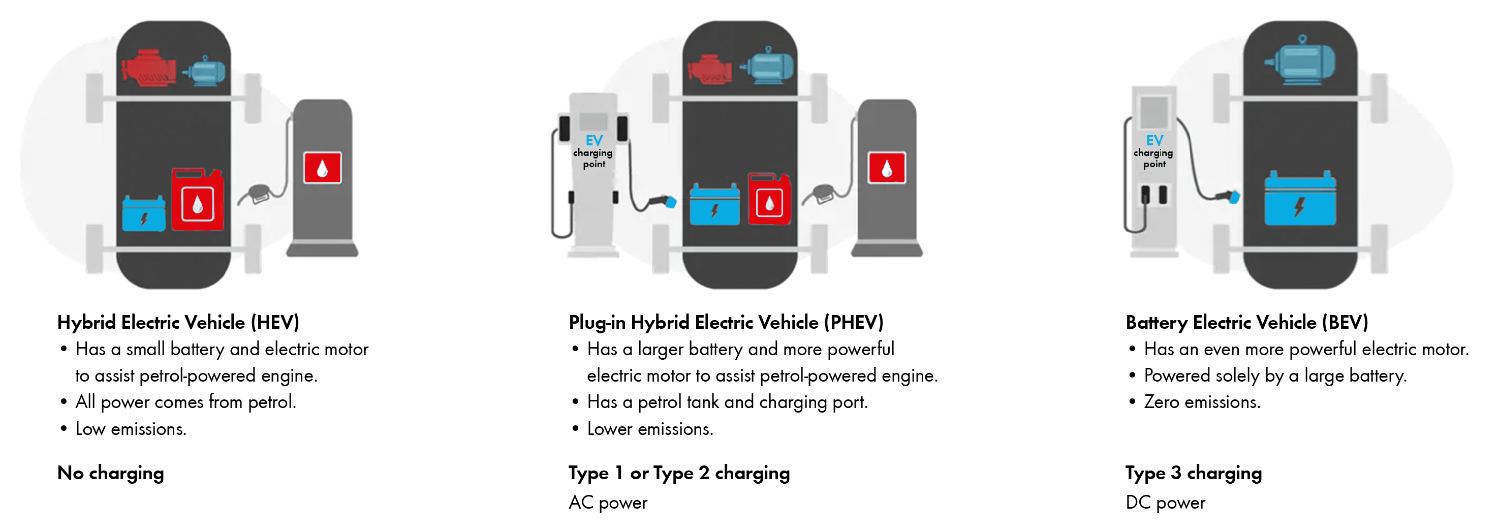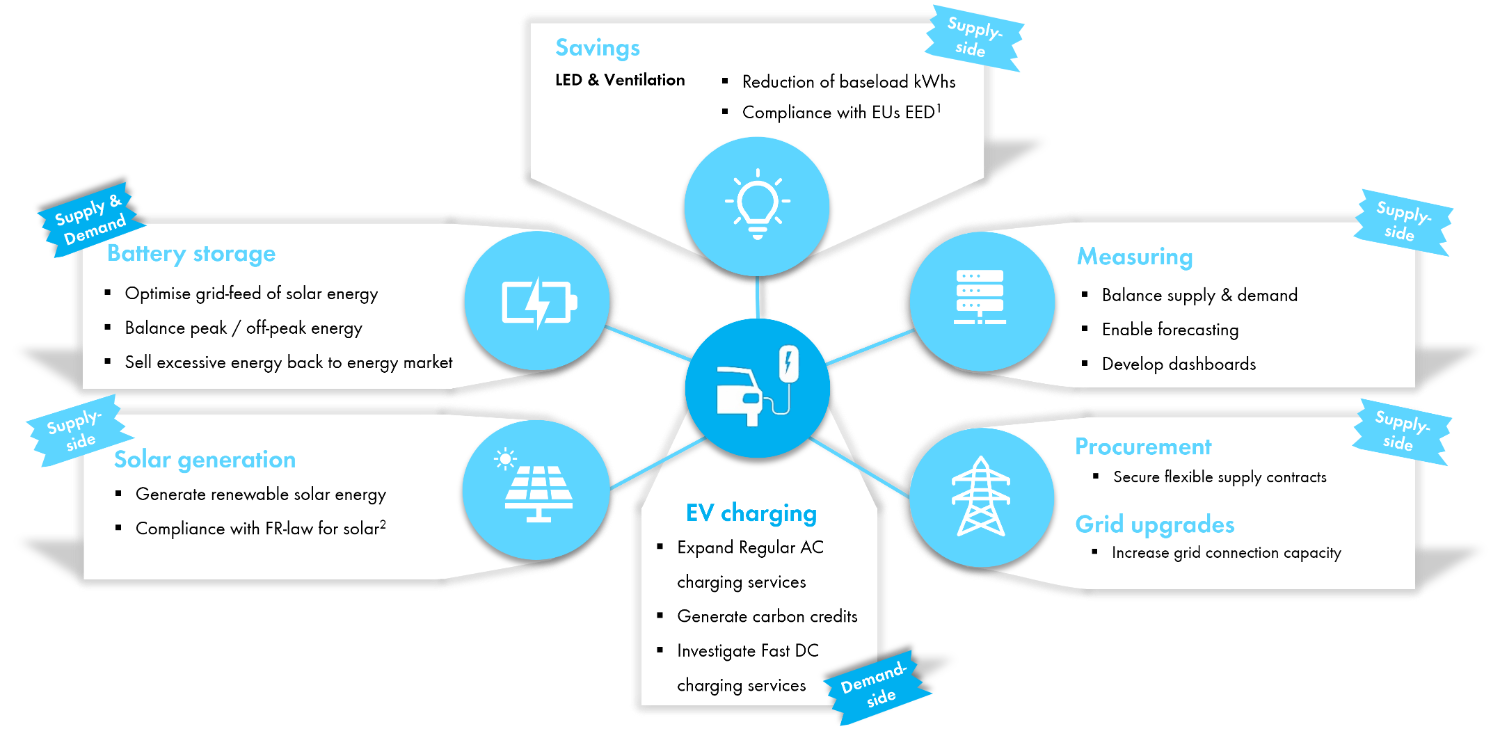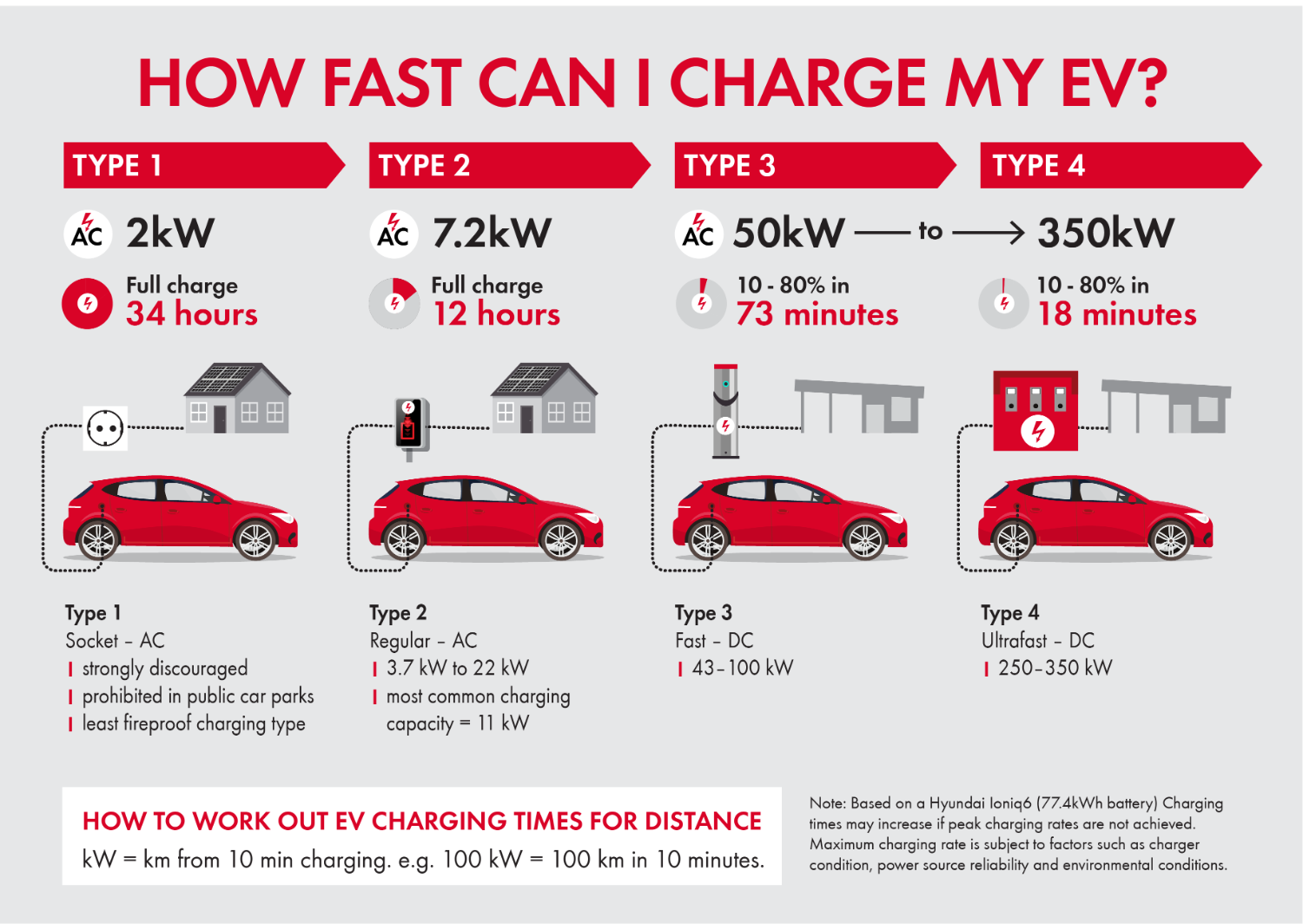Energy portfolio management
Supporting the energy and mobility transition
With many parking facilities at strategic urban locations, Q-Park plays an important role in facilitating EV charging for customers with electric vehicles. Our EV charging infrastructure supports the mobility transition, encouraging sustainable transport.
Parking and charging are a great match. With increasing numbers of battery electric vehicles (BEV) and plug-in hybrid electric vehicles (PHEV) in car fleets, demand for charging infrastructure continues to grow.
EV vehicle types and charging options

As sustainable mobility partner, it’s only logical to include expanding numbers of EV charging points in our parking facilities in our business plan. But the energy transition is causing grid lock in many major European cities, which makes upgrading our electricity supply to meet EV charging needs a considerable challenge.
Q-Park established its Energy Portfolio Programme to develop initiatives which cater to the growing demands for sustainable energy and mobility.
Initiatives range from expanding EV charging infrastructure to energy storage systems.
By developing this additional service alongside parking, we are unlocking incremental value which will empower us for the future!
Multifaceted programme
Energy portfolio management building blocks

Our multifaceted Energy Portfolio consists of six building blocks:
Energy savings
Measuring and dashboards
Procurement and grid upgrades
EV charging
Solar power generation
Battery storage
We have developed an energy roadmap to provide a framework for adding sustainable value to our core parking business. This covers the demand and supply sides of our energy management needs.
Supply and demand
On the demand side, we sell energy to our customers as they charge their EV while parking. On the supply side, we manage the energy we need more effectively.
The energy grid requires continuous balancing to manage variations in demand and supply. Electricity production, especially from renewable resources such as wind turbines and PV installations fluctuates constantly.
In our parking facilities where we have our own mini-grid and energy storage system, we have specialised dashboards which measure consumption and forecast our energy needs. This enables us to determine our capacity requirements and procure electricity accordingly. Energy storage plays a vital role in this eco-system of supply vs demand.
Demand
The demand side mainly consists of EV charging and topping up battery storage during off-peak hours.
Supply
On the supply side, we continue to take measures to reduce energy consumption. These measures include installing LED lighting with motion-detection and photocell systems to control lighting levels and save even more energy. We also take measures to reduce our carbon footprint by procuring renewable energy, and generating renewable energy ourselves with solar panels and/or wind turbines at selected above ground parking facilities.
We are enhancing our dashboards to help us to better balance supply and demand, and forecast our energy needs. We are working with suppliers to secure a flexible supply of renewable energy and where required, we apply for grid upgrades to meet EV charging needs.
EV charging
We see strong performance of the EV charging points we provide in our parking facilities. We have made good progress in the past three years:
more of our parking facilities provide EV charging points;
more charging points installed and more charging points operated by us;
EV charging is a complimentary service to parking with increasing charging transactions, thus supporting the transition to zero-emission mobility via Park+Charge and increasing emission-free kilometres.
Offering EV charging in our parking facilities is a service our customers appreciate. At present, the most common EV charging points in our portfolio are AC charging points providing 11 kW. National EV fleets include increasing numbers of battery only vehicles (BEVs) and AC charging can only top up (not fully charge) the battery when customers park for just one or two hours. As part of our Energy Portfolio Management, we are therefore looking into adding DC charging points, which offer faster charging, at selected locations if economically viable. This will further enhance the customer experience.
Performance over three years regarding numbers of EV charging points at selected parking facilities
2022 | 2023 | 2024 | |
PFs offering EV charging points | 235 | 249 | 261 |
Total EV charging points | 2,831 | 4,114 | 6,854 |
EV charging points operated by Q-Park | 1,664 | 2,996 | 4,708 |
Emission-free kilometres enabled (millions) | 43.0 | 48.5 | 77.7 |
ABOUT CHARGING SPEED
Charging speed depends on
Car model, age, battery capacity battery size (kWh) ÷ actual charging power (kW) = charging time.
EV charging point output.
Weather affects charging speed and range
Cold weather: reduces the range of an EV, and can also slow the charge speed.
Hot weather: can have a negative impact on battery health, reducing capacity over a long period.
Charging speed affects battery life
EVs generally charge to 80% quite rapidly, then charging pace slows to protect the batteries.
To maintain a healthy battery, manufacturers recommend maintaining the charge between 20 and 80%.
EV charging points vary what they can deliver
Depending on what they get from the grid.
Dual chargers deliver less when two vehicles charge simultaneously.
Main types and modes for EV charging (Source: ARENA, adapted)

Proof of concepts
LED lighting
From 2013 to 2019 we carried out a far-reaching LED transformation project. The primary objective was to reduce energy consumption, reduce energy costs, and decrease our carbon footprint.
At the time, we upgraded the lighting systems in more than 300 parking facilities, selected based on the business case per location. As part of our maintenance responsibilities and our obligations under the EU Energy Performance of Buildings Directive (EPBD), we continue to replace inefficient lighting systems with LED lighting with smart management throughout our portfolio.
Solar power and battery storage
Across our portfolio, we have identified over a hundred parking facilities with exposed rooftops which are potentially suitable for solar and/or wind power generation. In the medium-term, we will develop several pilots to expand our knowledge and gain further experience.
Energy procurement
We are defining an energy procurement strategy with a focus on:
developing guidelines for pricing and energy supply contracts;
embedding central energy marking monitoring.
Grip-on-Grid
To provide even more EV charging points in our parking facilities we need to upgrade our electricity supply. This can be very complex and time-consuming, so we are developing a standard approach with action plans per geographical area under the name ‘Grip-on-Grid’.
